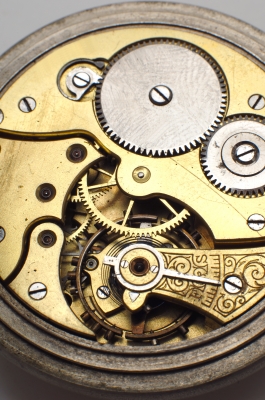April 2010
April 20, 2010
O’Mara’s Chain Miracle
How kindness could fill the world, if only assholes did not exist.
Posted By: Paul - Tue Apr 20, 2010 -
Comments (4)
Category: Fantasy, 1950s
April 19, 2010
Follies of the Mad Men #99
Apparently, this behavior is endearing in India.
Posted By: Paul - Mon Apr 19, 2010 -
Comments (3)
Category: Business, Advertising, Products, India
News of the Weird / Pro Edition (April 19, 2010)
News of the Weird/Pro Edition"You're Still Not Cynical Enough"
Exceptionally Inexplicable Dispatches from Last Week
April 19, 2010
(datelines April 10-April17; links correct as of April 19)
Perverts Gather in Washington (State), Plus Nose Leeches, Über-Clumsy, and Dog with a Rack
Federal agents uncovered an elaborate bestiality ring (involving horses) in Washington state. (Say what? No, that one in 2005 was a different elaborate bestiality ring [involving horses] in Washington state. That was in Enumclaw. This is near Bellingham.) Associated Press via MSNBC /// Seattle Times [2005]
A 34-year-old woman was convicted in Nevada of forcing a 13-year-old boy to fondle her breasts. She was sentenced to life in prison. (Seriously.) (She might've gotten less if she'd just killed him.) Elko Daily Free Press
A large crucifix hanging in a Catholic church in Oklahoma shows Jesus with either extremely well- and oddly-defined abs, or a penis growing out of his belly. One or the other. The Oklahoman
The great, great California town of Bolinas ("We don't exist, so stay away." "Bolinas? Never heard of it." "Get off all our lawns." "Leave us the hell alone.") is back in the news because one of the town's 580 water meters has become available, and if you have a water meter, you can live there. Estimated auction price: $300,000. New York Times
I'm from the government, and I'm here to help you; I want you to get the monthly Supplemental Security Income payments you deserve for your disabled 3-year-old son. (Well, gee, thanks!) The very next month, though, Medicaid dropped Mom's upcoming bone marrow surgery for her cancer because that new SSI check put her just barely over the qualifying-income line. (Update: She's back in the queue.) WFOR-TV (Miami)
More in extended >>
Posted By: Chuck - Mon Apr 19, 2010 -
Comments (5)
Category:
April 18, 2010
Walrus Dances to Michael Jackson Song
The Dancing Walrus And Trainer (HQ)
Uploaded by IndyRacer2. - Watch hilarious animal videos
Posted By: Paul - Sun Apr 18, 2010 -
Comments (6)
Category: Animals, Music
April 17, 2010
Weird Science - Towel Folding Robot
Judging by the huge response to what I thought was a fairly large and obscure post about a tiny coincidence, the Hitchhiker's Guide and cutting-edge science is obviously a winning combination.So here is a super special Douglas Adams bonus, a robot folding towels! Okay so that's a bit of a stretch, but it is still quite cool.
Note that this video has been speeded up 50x, in real time it took the robot over an hour and a half to complete this one task. Perhaps it was feeling a little depressed?
Posted By: Dumbfounded - Sat Apr 17, 2010 -
Comments (25)
Category: Boredom, Futurism, Inventions, Robots, Science, Experiments, Technology
Bizarro Guidebooks
Posted By: Paul - Sat Apr 17, 2010 -
Comments (6)
Category: Regionalism, Books
April 16, 2010
These Are the Droids You’re Looking For
Everybody who's anybody knows that one of the best motion pictures of all time is the original Star Wars. So what is the best way to pay tribute to such a cinematic masterpiece? That's right, by breaking the film into 472 fifteen second clips and having fans reenact it. Ladies and gentlemen, I present Star Wars Uncut:Star Wars: Uncut Trailer from Casey Pugh on Vimeo.
As confusing as it should be to change actors, style, and even plot details four times per minute, somehow this actually works. There are some completed segments and you can see most of the individual clips on their site. I only wish I had found out about this sooner, so I could take part.
I seriously can't wait until this comes out.
Posted By: Salamander Sam - Fri Apr 16, 2010 -
Comments (2)
Category: Entertainment, Movies, Pop Culture, Video, Science Fiction, Roleplayers and Re-enactors, Parody
Weird Science - Douglas Adams For The Win!

That prevailing view of the universe was thrown, literally, into chaos with the advent of quantum physics, where counter-intuitive results were commonplace, effects could appear to happen before causes (or even without causes) and true randomness abounded. In an effort to return to the saner world of "classical mechanics" many physicists sought to again ascribe the apparent randomness of quantum systems to ignorance, they declared that "hidden variables" currently unknown to science had secretly determined the results. Even Einstein, whose 1905 paper on the photoelectric effect had helped found the new physics was moved to say categorically that "God does not play dice!"
But who was right? In an effort to determine this, in 1964 the physicist John Bell performed a thought experiment whereby pairs of entangled particles (ones where a particular property of the pair is known but each particle's individual contribution is not) are measured simultaneously while a great distance apart from each other. In the classical view either the results would have been determined well in advance of the measurements, in which case they should correlate perfectly, or they are separately determined by the act of measurement, in which case they should not correlate at all. Bell showed with mathematical rigour that in one particular experiment any hidden variable theory should produce a correlation of < 0.5. This became known as the Bell Inequality. At the time there was no practical way to test Bell's hypothesis, and the earliest attempts in 1972 were inconclusive, but by the 1980s the technology had matured to the point that physicists could be very confident that Bell's Inequality had been violated, at its core the quantum universe really was truly and utterly random.
But how random? Consider the quantum equivalent of a coin-toss, one that is completely fair and - as we have discovered - completely random; clearly it is equally likely to end up in only one of two states, the quantum equivalent of "heads" or "tails". We could represent each result with either a 1 or a 0, so the amount of randomness of our quantum coin is said to be "1 bit". But quantum systems are not bound to act like coins, perhaps they are more like dice or roulette wheels, perhaps a quantum system is a random as a lottery draw with literally millions of possible outcomes. It was to answer this question that a team led by S. Pironio of the Laboratoire d’Information Quantique in Brussels set up and ran their own "Bell experiment" and measured with 99% confidence just how random quantum systems are.
So how many bits of outright randomness are created by each quantum interaction? If the title didn't give it away, the answer is...
More in extended >>
Posted By: Dumbfounded - Fri Apr 16, 2010 -
Comments (10)
Category: Ambiguity, Uncertainty and Deliberate Obscurity, Philosophy, Science, Experiments
Follies of the Mad Men #98
Nooka race from ilovedust on Vimeo.
I guess you have to be cool and hip enough to know what this product is before viewing the ad, because you certainly do not learn during the commercial.
Posted By: Paul - Fri Apr 16, 2010 -
Comments (5)
Category: Ambiguity, Uncertainty and Deliberate Obscurity, Business, Advertising, Products
April 15, 2010
Water or Fire?
Here's a great illusion -- made with high-speed photography?
Here's the link to more water/flame pictures!!
http://www.moillusions.com/2006/10/water-flames-illusion.html
Don't burn yourself!!
Posted By: gdanea - Thu Apr 15, 2010 -
Comments (2)
Category: Photography and Photographers
| Get WU Posts by Email | |
|---|---|

| Who We Are |
|---|
| Alex Boese Alex is the creator and curator of the Museum of Hoaxes. He's also the author of various weird, non-fiction books such as Elephants on Acid. Paul Di Filippo Paul has been paid to put weird ideas into fictional form for over thirty years, in his career as a noted science fiction writer. He has recently begun blogging on many curious topics with three fellow writers at The Inferior 4+1. Chuck Shepherd Chuck is the purveyor of News of the Weird, the syndicated column which for decades has set the gold-standard for reporting on oddities and the bizarre. Our banner was drawn by the legendary underground cartoonist Rick Altergott. Contact Us |

